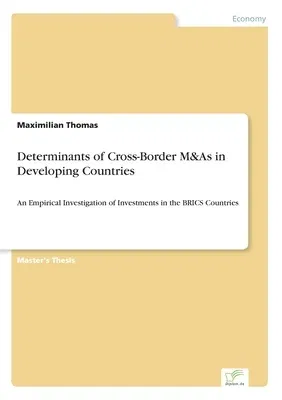During the last three decades, the importance of cross-border mergers
and acquisitions (M&As) as a favourite top-level managerial strategy of
multinational enterprises (MNEs) and national champions has increased
significantly. The global value of cross-border M&As has grown from
around USD 100 billion in 1990 to USD 815 billion in 2018, peaking in
2007 with over USD 1 trillion just before the outbreak of the global
financial crisis. This development is not surprising, since the ongoing
globalization and the changing global market landscape lead to more
complex challenges for companies. In order to face the increasing
intensity of competition that accompanies the global integration of
markets, cross-border M&As constitute an appropriate way of maintaining
competitiveness and creating added value. The acquisition of
pre-existing foreign assets enables MNEs not only to exploit synergies
and growth opportunities but also to overcome latecomer disadvantages.
In addition, M&As offer a time advantage over organic growth strategies
such as greenfield investments, which is particularly important
considering the dynamic market conditions and the shortening product
life cycles. This thesis examines the research question of which
country-specific factors determine the volume of inbound cross-border
M&As in developing economies. In general, the choice of a cross-border
acquisition as an entry mode into a foreign market is influenced by
three types of factors: (1) firm-specific factors such as prior
acquisition experience, product diversity and core competences; (2)
industry-specific factors such as technological, sales and marketing
intensity; and (3) country-specific factors such as market size and
institutional quality. While firm- and industry-specific factors also
play a role in domestic M&As, country-specific factors are a peculiarity
in cross-border M&As. According to the research question, the aim of
this thesis is to identify country-specific factors that represent det


